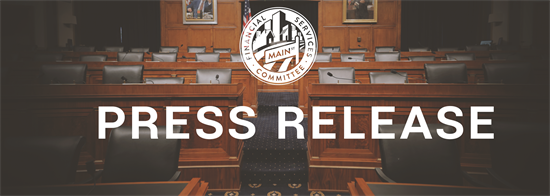The Cost of Going Public
Washington,
July 18, 2017
The Subcommittee on Capital Markets, Securities, and Investment held a hearing today to examine the burden that federal corporate governance policies – particularly under the Sarbanes-Oxley and Dodd-Frank Acts – have on public companies, and to discuss ways to ease the unnecessary regulatory burdens faced by public companies to facilitate capital formation and promote economic growth. “I find it extremely concerning that the number of publicly traded companies is approximately half of what it was twenty years ago,” said Subcommittee Chairman Bill Huizenga (R-MI). “While there are many factors as to why the number of public companies has declined, the main challenges I continue to hear about are how difficult it is to go public and how difficult it is to remain public. We must continue to build upon the success of the bipartisan JOBS Act by further modernizing our nation's securities regulatory structure to ensure a free-flow of capital, job creation, and economic growth. It's time to get the federal government working to ensure that American businesses are able to raise the capital they need to expand, support innovation, and reward hardworking Americans.” Key Takeaways from the Hearing
Topline Quotes from Witnesses “The burdens of SOX are but one aspect of being a public company today. In recent years, as a result of the Dodd-Frank Wall Street Reform and Consumer Protection Act of 2010, through the SEC’s rulemaking agenda, and in response to calls from the investor community, public companies are engaged more than ever before in evaluating corporate disclosures and demonstrating compliance with a myriad of new and enhanced regulatory requirements. The increasingly difficult class-action litigation environment for public companies today amplifies these concerns across the board.” – Thomas Farley, President, NYSE Group “No one single event or regulation lies at the heart of the public company crisis. Like straw upon a camel’s back, the burdens and reporting requirements associated with being a public company have steadily accumulated over the years, to the point where many businesses today are saying “no thanks” to a model that was once the ultimate dream of American entrepreneurs. The JOBS Act was a good first step towards arresting this worrisome trend, but there is more that can and should be done. ” – Tom Quaadman, Executive Vice President, Center for Capital Market Competitiveness, U.S. Chamber of Commerce “Section 404(b) of Sarbanes-Oxley (SOX) divert innovation capital away from the lab, while external forces like proxy advisory firms and manipulative short sellers increase costs and deter vital investment. These barriers, and others, reduce the viability of the public market as a capital formation option for emerging biotechs, ultimately harming issuers, investors, and patients alike. Given the importance of public capital formation for life-saving innovation, I am hopeful that the Subcommittee can take action to enact regulatory and corporate governance policies that bolster America’s world-leading capital markets and prioritize both capital formation and resource efficiency for innovative small businesses.” – John Blake, Senior Vice President of Finance, aTyr Pharma, Inc. “There are other adverse consequences of entrepreneurs delaying or forgoing taking their companies public. One is job growth, or rather the lack of it…Another is the diminished ability of the average American investor to build wealth in his or her portfolio” – John Berlau, Senior Fellow, Competitive Enterprise Institute |


